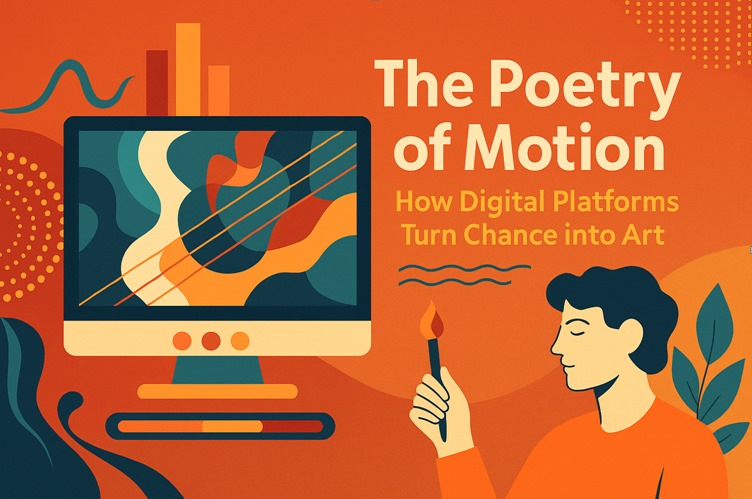The Poetry of Motion: How Digital Platforms Turn Chance into Art
Updated: 27 Oct 2025
34

Modern creativity is no longer confined to the page or the stage. It now lives in the rhythm of interaction, in the coded pulses of technology, and in the emotional design of digital experiences. Just as poets arrange words to create meaning, today’s designers arrange motion, color, and timing to evoke emotion and reflection.
In the same way that a well-crafted poem guides the reader through surprise and balance, some digital experiences explore rhythm, tension, and release – transforming randomness into expression. A good example of this delicate balance between creativity and unpredictability can be found here, where design and interaction meet to form a new kind of aesthetic engagement.
1. The rhythm of unpredictability
Every creative act involves uncertainty. The poet doesn’t know how a line will sound until it’s spoken; the artist doesn’t know how light will hit the canvas until it’s finished.
Digital design mirrors this same process:
- Randomized patterns create spontaneous visual harmony.
- Algorithmic feedback transforms user interaction into rhythm.
- Each action, like a poetic line break, shifts emotion and focus.
The result is a dynamic form of art where control and chaos coexist beautifully.
2. The emotional code of interaction
Where poetry uses meter and metaphor, interactive media uses timing, feedback, and flow. These elements define how we experience digital beauty.
| Creative Principle | Digital Equivalent | Emotional Effect |
| Repetition | Animated loops or rhythm-based sequences | Familiarity and anticipation |
| Contrast | Light vs. shadow, sound vs. silence | Heightened awareness |
| Ambiguity | Open-ended outcomes | Curiosity and reflection |
This synthesis of design and emotion gives digital art its own poetic language – one that speaks through action instead of words.
3. Art in the age of interaction
The line between spectator and creator is fading. Every click, gesture, and pause becomes part of a larger narrative. Just as performance poets feed off audience energy, interactive platforms evolve through user input.
That interplay creates a space where:
- Participation equals authorship;
- Technology becomes a brushstroke;
- Art transforms into collaboration.
It’s a form of creativity that doesn’t just tell stories – it invites you to move inside them.
4. The future of digital expression
As algorithms grow more intuitive, they start to echo artistic instinct.
We are entering a time when systems can generate not just output, but feeling:
- Interfaces that adapt to mood.
- Colors that respond to attention.
- Experiences that feel alive in real time.
This is not the end of art; it’s its next evolution – where structure meets spontaneity, and where design becomes poetry in motion.
Conclusion
The beauty of art has always lived in contrast – between order and freedom, silence and sound, certainty and surprise. The same duality now shapes digital creation. When creativity meets technology, every moment – every click, every pause – becomes a verse in the ongoing poem of human connection.

Please Write Your Comments